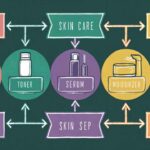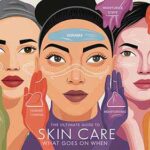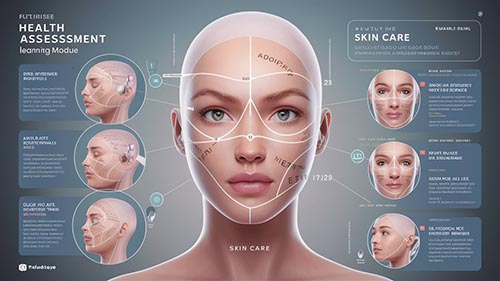Conducting a health assessment for the skin is an essential skill for healthcare professionals. Understanding the nuances of skin health can lead to early detection of diseases, better treatment plans, and overall improved patient care. This blog post will guide you through creating a comprehensive and informative health assessment learning module for skin. We’ll cover the basics, delve into the essential components of a skin assessment, and provide actionable tips to ensure your module is both effective and engaging.
The Importance of Skin Health Assessments
Skin is the largest organ of the body and serves as the first line of defense against environmental hazards. According to the American Academy of Dermatology, one in five Americans will develop skin cancer by the age of 70. Early detection through proper skin assessments can significantly reduce the risk of severe outcomes.
Not only does a thorough skin assessment help in identifying potential skin cancers, but it also assists in diagnosing other conditions such as eczema, psoriasis, and infections. A well-structured learning module can empower healthcare professionals with the knowledge and skills needed to perform these assessments effectively.
Components of a Health Assessment Learning Module for Skin
To create a comprehensive learning module, it’s important to cover several key components. These include:
1. Introduction to Skin Anatomy and Physiology
Start with the basics. Provide a detailed overview of the skin’s anatomy and physiology. This should include information on the different layers of the skin (epidermis, dermis, and subcutaneous tissue) and their respective functions. Incorporate diagrams and images to enhance understanding.
2. Common Skin Conditions and Diseases
Educate your learners on common skin conditions and diseases. Include conditions like:
- Skin cancer (melanoma, basal cell carcinoma, squamous cell carcinoma)
- Eczema and dermatitis
- Psoriasis
- Acne
- Fungal infections
- Bacterial infections (e.g., cellulitis)
Provide statistics on the prevalence of these conditions and highlight the importance of early detection and intervention.
3. Assessment Techniques and Tools
Teach the various techniques and tools used in skin assessments. This section should cover:
- Visual inspection: Teach learners how to conduct a thorough visual examination of the skin, noting any abnormalities such as lesions, rashes, or color changes.
- Palpation: Explain the importance of palpation in assessing skin texture, moisture, and temperature.
- Dermatoscopy: Introduce dermatoscopy as a tool for examining skin lesions more closely, aiding in the diagnosis of skin cancer.
- Biopsy: Discuss when a skin biopsy is necessary and the different types of biopsies (e.g., punch biopsy, shave biopsy).
4. Documentation and Reporting
Emphasize the importance of accurate documentation and reporting. Teach learners how to document their findings in a structured manner, using standardized terminology. Provide examples of good documentation practices.
5. Patient Communication and Education
Effective communication with patients is crucial. Train learners on how to communicate their findings to patients, provide education on skin health, and offer guidance on preventive measures. Include tips on how to handle sensitive topics, such as discussing potential skin cancer diagnoses.
Creating an Engaging Learning Module
To ensure your learning module is engaging and effective, consider the following tips:
1. Use Multimedia
Incorporate multimedia elements such as videos, interactive diagrams, and quizzes. For example, a video demonstrating a skin assessment can provide a visual aid that enhances understanding.
2. Include Case Studies
Case studies are an excellent way to apply theoretical knowledge to real-world scenarios. Include case studies with detailed patient histories, assessment findings, and discussion questions.
3. Provide Hands-On Practice
Encourage hands-on practice through simulations or supervised clinical practice. This allows learners to apply their knowledge and develop their skills in a controlled environment.
4. Offer Continuous Feedback
Provide continuous feedback to learners. This can be through quizzes, peer reviews, or instructor feedback. Constructive feedback helps learners identify areas for improvement and reinforces their learning.
Conclusion
Creating a health assessment learning module for skin is a valuable endeavor that can significantly impact patient care. By covering the essential components of skin anatomy, common conditions, assessment techniques, documentation, and patient communication, you can equip healthcare professionals with the knowledge and skills they need to perform effective skin assessments. Ensure your module is engaging by incorporating multimedia, case studies, hands-on practice, and continuous feedback. With these elements in place, your learning module will be a comprehensive and valuable resource for healthcare professionals.
Remember, early detection and intervention are key to preventing severe skin conditions. By educating healthcare professionals on proper skin assessment techniques, we can improve patient outcomes and promote overall skin health.
Read : 10 Essential Steps in a Daily Skin Care Routine for Men












One thought on “How to Conduct a Health Assessment Learning Module for Skin”